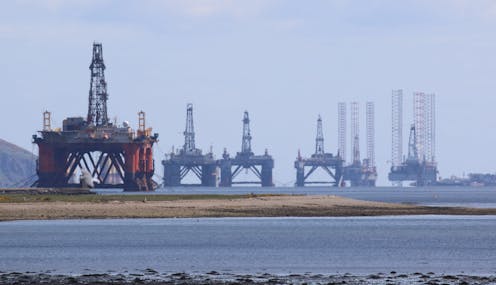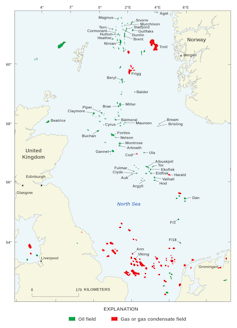
Keeping control of our planet’s thermostat is proving tricky these days. Temperatures are rising slowly, and inaction is proving costly as we awkwardly lurch towards a cleaner future.
Some industries are proving stubbornly difficult to decarbonise, and we are likely to miss the key 1.5°C warming target. One response: big machines that suck CO₂ out of the air, also known as direct air capture.
Stemming from something like a realist science-fiction flick, these literal “skyscrapers” act like massive industrial vacuum cleaners. They strip the CO₂ from the air and store it in a secure location for at least 1,000 years. However, there are various problems with these machines, which is why they may be best suited to oil rigs.
The problems are threefold. Even if they were rolled out at a vastly bigger scale, they are still expensive, noisy and a major eyesore, which means they cannot be built where people live.
Also, for these machines to work at their best, they would ideally be powered by renewable energy which is why wind power has been endorsed by leading scientists as the perfect marriage for direct air capture.
On land, wind turbines the size of high-rise buildings have their critics. But offshore, there are no locals to bother and the turbines can produce more energy as the wind supply is more consistent.
There is also an abundance of sites below the sea where oil and gas has been extracted and where CO₂ can now be stored.
Make use of abandoned oil rigs
Placing CO₂ scrubbers on abandoned oil rigs and sending them out to sea would allow us to take advantage of this. It would also provide a way to deal with the dozens of abandoned oil rigs that pose a serious issue for the industry as they are expensive to decommission. The UK’s rigs alone could cost an estimated £24 billion.
An international convention known as Ospar also dictates that such rigs cannot stay in the sea and must be removed. This conflicts with UK policy on the preservation of marine life since the legs of the rig can act as artificial reefs creating new marine habitats.
Taxpayers money that would be spent on decommissioning could instead be diverted towards retrofitting the big rigs with the ability to suck CO₂ from the air. Pipelines between air scrubbing machines and the carbon storage reservoirs can be prohibitively expensive, but would be cheaper in this scenario as most of the pipes already exist.
The rigs possess the capability to store CO₂ using the on-board equipment that was previously used to extract oil and natural gas, except it would, with minor modifications, be operated in reverse.

For now, the returns would be modest. Based on the amount of carbon these machines would typically capture – about 1 million tonnes of CO₂ a year requires machines covering half a square kilometre – a large oil rig might capture around 65,000 tonnes of CO₂ a year.
This of course isn’t much on a global scale. The UK alone emits 332 million tonnes annually. But all options are worth trying, and it’s a technology we can expect to improve in coming years.
It may also be possible to extract CO₂ directly from the oceans. Recent research by the Massachusetts Institute of Technology suggests this would actually be far more efficient. Carbon is 100 times more concentrated in seawater than it is in the sky, and this approach could ultimately begin reversing acidification in our oceans.
Rigs that can be moved to other sites on demand would be the perfect candidates, as the same rig could store CO₂ in many different sites under the sea. These sites include empty natural gas reservoirs and underground rivers, and it is this flexibility that could finally resolve the ongoing stalemate between the Ospar convention and the UK government.
The industry is still too small to deliver carbon removal on anything like the required scale. This is due to a lack of investment, and a very minimal market presence.
But, much like how the vaccines for COVID quickly matured due to the absolute necessity of the global pandemic, we now also require a significant mass investment to generate our own market that allows us to remove carbon. The US company Frontier, backed by tech giants, is providing US$925 million (£738 million) in order to stimulate such a market into existence.
Unfortunately, even this only represents between 0.1% and 1% of the total finances required every year up until 2050. That’s because, even in an optimistic scenario where renewables grow and global emissions are reduced, we’ll still need to remove 10 billion tonnes of carbon to compensate for the fact that industries like steel and cement are notoriously hard to decarbonise.

Don’t have time to read about climate change as much as you’d like?
Get a weekly roundup in your inbox instead. Every Wednesday, The Conversation’s environment editor writes Imagine, a short email that goes a little deeper into just one climate issue. Join the 20,000+ readers who’ve subscribed so far.
Ben Kolosz does not work for, consult, own shares in or receive funding from any company or organization that would benefit from this article, and has disclosed no relevant affiliations beyond their academic appointment.
This article was originally published on The Conversation. Read the original article.







